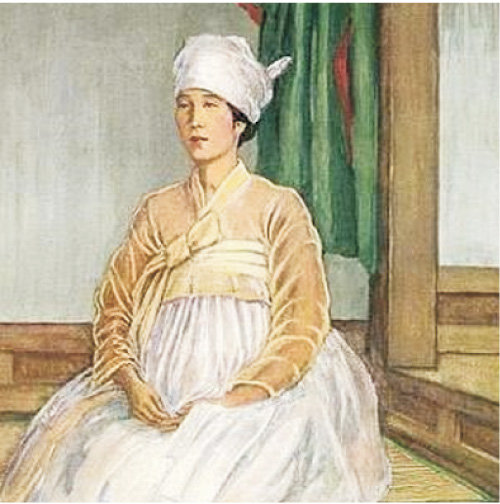A sad widow from Joseon
A sad widow from Joseon
Posted August. 26, 2020 07:41,
Updated August. 26, 2020 07:41

With its sovereignty lost to Japan, Joseon turned into a place of sorrow, loneliness and misery. It did at least in the eyes of Scottish painter Elizabeth Keith (1887-1956). She came to Korea on March 28, 1919 when Koreans were brutally suppressed after the March 1st Movement. Her heart broke for the protesters who were tortured just because they peacefully chanted, “Viva,” waving the Korean flag and for those who became hopeless subjects of insults. The Japanese police sprayed ink on white clothes of Korean men, which was a petty attempt to erase their identity in much of the same way they banned Korean. Keith wanted to draw warm gazes from the world to lonely Koreans.
However, she could not paint the cruel reality she witnessed because she would be deported. She was followed by Korean spies anywhere she went. This explains why her book, “Old Korea,” released in 1946 contains drawings that depict the beauty of Korean culture and customs such as their clothes and houses. She drew what she laid her warm gazes on. That was all she could do.
However, there was one exception, which was a painting called “Korean Widow.” It is easy to dismiss it as an ordinary work of art, but a closer look reveals how perfectly it encapsulates the struggles Koreans experienced at the time. The woman in the painting is a widow who lost her husband in the March 1st Movement. She herself is released from prison just now after being tortured. She is devastated not only because her husband died but also because she might not be able to see her only son ever again who got arrested by the Japanese police for his involvement in the independent movement.
The woman in the picture looks calm as she must be so heartbroken, which makes it even sadder. Keith brilliantly captured the reality of a colony where people could not even let themselves cry out loud even when they were going through so much sorrow. In a sense, everyone living in a colonized Joseon was the widow in the painting.







